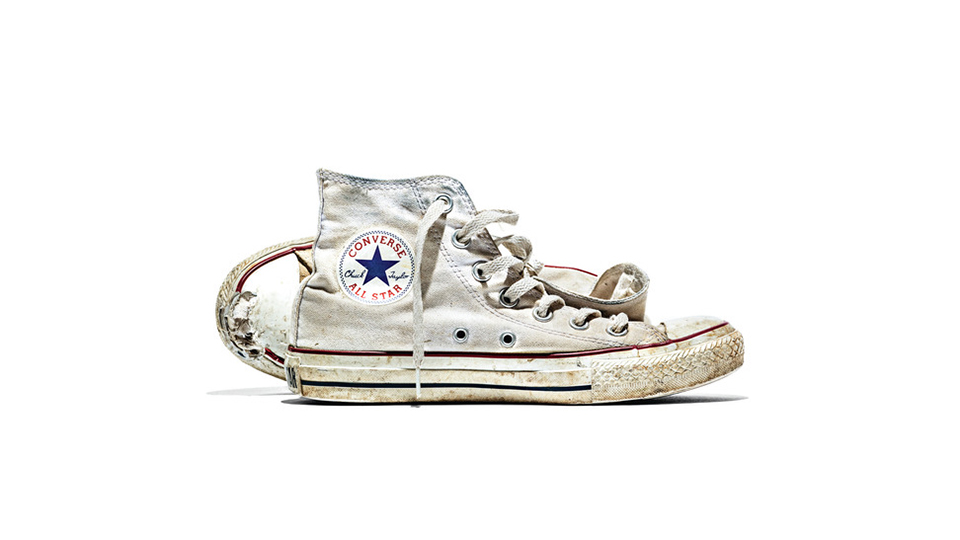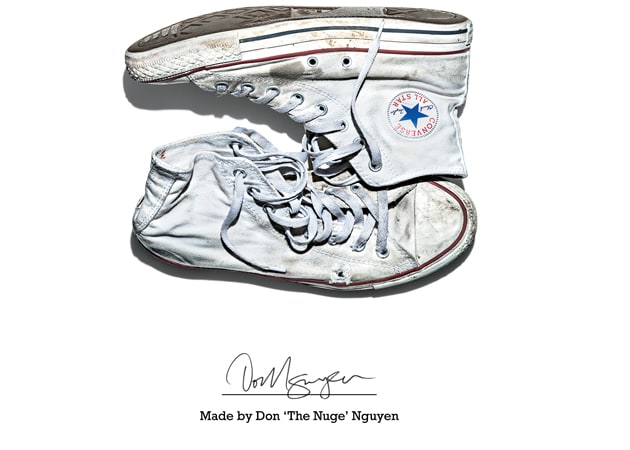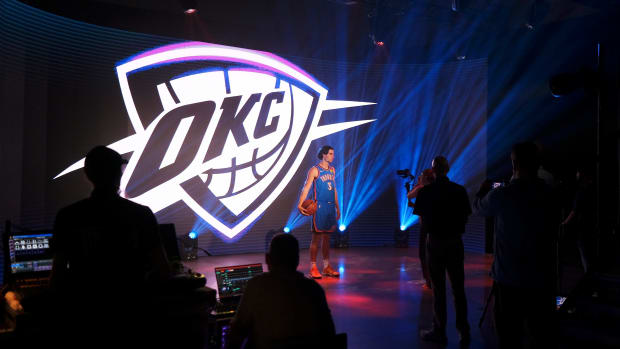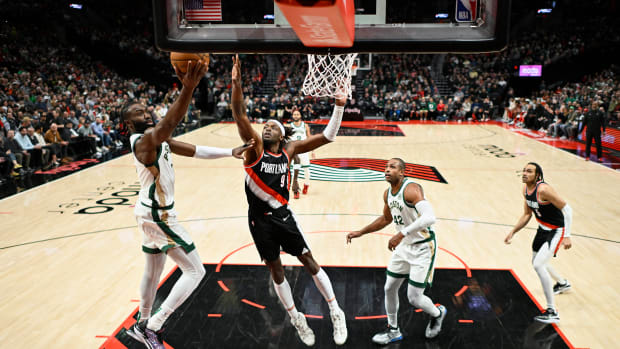
The Chuck Taylor All Star: A story of the first signature sneaker
We all know the Converse Chuck Taylor All Star for its canvas, but the history of the world’s first signature sneaker was born from the shoe’s other prominent material: rubber.
Nearly 100 years since its birth, the Chuck Taylor signature may have migrated away from the hardwood—it was last worn in an NBA game by Tree Rollins in 1979—but the Chuck lives on, full of in-game history and sport-to-lifestyle crossover appeal.
Converse, like many other brands in the early 1900s, started as a rubber company, founded in 1908 in Malden, Massachusetts. In 1915, Converse created a shoe geared toward tennis and another rubber-based sneaker built for traction, competing with an A.G. Spalding rubber-soled shoe. But, in 1917, it was time for basketball to shine when the Converse "All Star" was created for on-court athletics.
The Converse All Star featured a traction-filled rubber sole and high-top cotton-based canvas upper. The shoe, though, didn’t hit popularity quickly. That wouldn’t last.
In 1921, Chuck Taylor, an Indiana-born All-American basketball player—he played for the early iteration of the Boston Celtics—and well-known coach signed on to sell Converse from the company’s Chicago sales office.
Nike gets technical in new Elite Series sneakers for LeBron, Durant and Kobe
“He was one of the first endorsed athletes in the world,” Rodney Rambo, Converse’s vice president of marketing, tells SI.com.
But this endorsed athlete turned into something far bigger in the shoe industry: Chuck had the first signature sneaker of all-time by 1923 when Converse added a patch on the ankle of the All Star with his name.
“It really wasn’t until the endorsement of Chuck Taylor that it became the technical go-to sneaker,” Rambo says. “Once Chuck came on board, he was a salesman for us and a great coach.”
Starting in 1921, Chuck became involved in the design of the sneaker, helping develop it beyond the original 1917 creation to increase the amount of support in the ankle and help reconfigure the outsole formula for increased traction. Chuck’s involvement from 1921 to 1923 was key in slapping his name high on the ankle.
With a flurry of activity surrounding the Converse Chuck Taylor All Star from its creation in 1917 until 1923, the next 30 to 40 years allowed Converse to continue its rise in sports. “A lot of it was with the endorsement,” Rambo says. “We were the first to really focus on sport. Converse was the only company addressing needs of athletic consumers in the marketplace with a signature sneaker.”
Even with success—Chuck was on the feet of the first U.S. Olympic basketball team in 1936, both Oregon and Ohio State in the first NCAA Championship game in 1939 and nearly every NBA player when the league formed in 1949—the Chuck wasn’t what we now know of it. It came in white and black, just like every other shoe available at the time. But that changed in the late 1960s when Converse started offering multiple colors.
“We were giving consumers the opportunity to express themselves through footwear outside of black and white,” Rambo says. “It was the first time for many people to choose something that expressed their personality a little better.”
The combination of the shoe being synonymous with basketball for roughly 40 years and the addition of multiple colors started to give an athletic shoe a cultural crossover appeal that companies dream about. As athletes had the chance to choose their personality via color, Rambo says the Chuck really hit its cultural stride in the 1970s when punk rock musicians from Brooklyn to London started adopting the shoe.
“People started to see through their lens that the Chuck was not just an athletic sneaker,” Rambo says. “It was a blank canvas and badge of self expression.”
In the 1970s, as a plethora of other technological shoes started to hit the basketball floor—including some from Converse that paid homage to the All Star via the shoe’s silhouette—the cultural shift was in full force, moving the Chuck Taylor All Star from a pure basketball shoe to a lifestyle choice.
In the movie Grease, more musicians donned the colorful canvas. Seeing opportunity to expand, Converse added low-top Oxford versions and more, and the Chuck Taylor found a new athletic life in the world of professional skateboarding.
[daily_cut.NBA]“Some of the first professional skateboarders, the guys that really developed skateboarding for today and took it from being this thing that was focused on in county fairs as an odd dance-type maneuver and took skateboarding to the street, they were wearing Chucks,” Rambo says. “They were wearing Chucks and doing amazing things.”
While the Chuck Taylor All Star wasn’t necessarily the first skate shoe—a claim held by Vans—the Chucks were worn at the same time as the first skate shoes, giving the Chuck roots in the birth of a second sport.
The Chuck Taylor is no longer a basketball shoe, even if it will always be a basketball shoe. Sure, Rambo admits, it’d be amazing to see an NBA player lace up a pair in a game again, but the company isn’t holding out hope. Instead they enjoy seeing the countless iterations hitting fashion runways, waltzing along the red carpet at the Grammys, filling the movie screen or simply hitting the streets all over the world.
Not being considered a basketball shoe hasn’t stopped the technological advances seen in the Boston-area company, which is moving across the street from the TD Bank Garden on April 15. From canvas to leather and even a rubber Chuck that makes the shoe waterproof—the most unique evolution, in Rambo’s opinion—Converse, now owned by Nike, hasn’t stopped building off the Chuck Taylor.
“There is always a new approach with materials,” Rambo says. “One of the biggest things is we never mess with the aesthetic of the Chuck. Consumers love it for the way it looks. There is a saying around here, ‘Don’t mess with Chuck.’”
After nearly 100 years, basketball’s first signature shoe lives on in culture. Rubber, canvas and Chuck.
Tim Newcomb covers stadiums, design and gear for Sports Illustrated. Follow him on Twitter at @tdnewcomb.



































